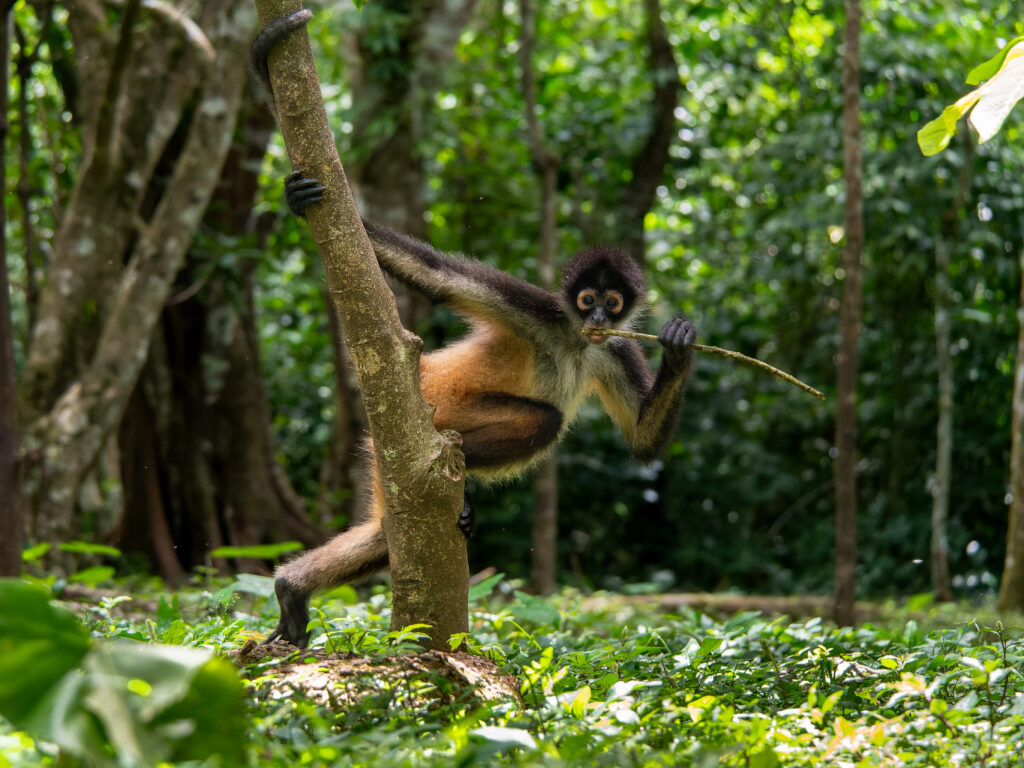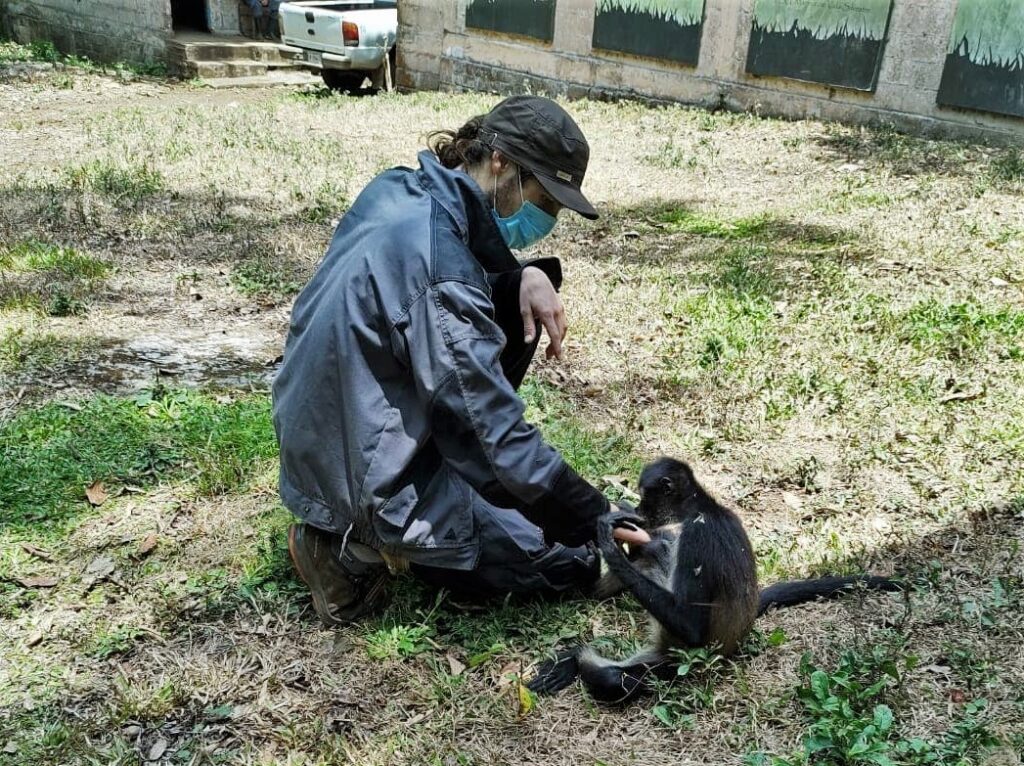Background
Aims
The world of primate cognition offers vast areas to explore, and the intriguing spider monkeys, with their thumbless hands and fully prehensile tail, are no exception. These primates share several characteristics with humans and chimpanzees, such as a large relative brain-body size, a frugivorous diet, and complex fission-fusion dynamics (Campbell, 2008) – factors typically associated with high cognitive capabilities. However, they remain under-studied. Inspired by preliminary studies (Bosshard, 2022), this research delved further into delved into their abilities of learning and memory. We employ Harlow‘s 1950s pioneering designs, assessing mental flexibility and concept understanding through reversal learning tasks and learning-set formation.

The goal of this study is threefold:
- to understand if spider monkeys possess the cognitive ability of stimulus reversal learning with visual stimuli
- to investigate their cognitive ability for learning-set formation with visual stimuli
- to assess their capacity for long-term memory retention with visual stimuli
These cognitive tests can offer insights into their abilities of learning, thereby contributing to filling knowledge gaps in spider monkeys’ cognition.

References:
Bosshard, T. C., Salazar, L. T. H., & Laska, M. (2022). Numerical cognition in black-handed spider monkeys (Ateles geoffroyi). Behavioural Processes, 201, 104734. https://doi.org/10.1016/j.beproc.2022.104734
Campbell, C. (Ed.). (2008). Spider Monkeys: Behavior, Ecology and Evolution of the Genus Ateles (Cambridge Studies in Biological and Evolutionary Anthropology). Cambridge: Cambridge University Press. doi:10.1017/CBO9780511721915